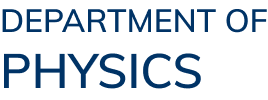Abstract
The European Strategy in Particle Physics, has put in 2020 an e+e- factory as first priority and recommended that Europe, together with its international partners, should investigate the technical and financial feasibility of a future hadron collider at CERN with a centre-of-mass energy of at least 100 TeV, and with an electron-positron Higgs and electroweak factory as a possible first stage. Such a feasibility study of the colliders has now been completed. The speaker will present in this seminar some FCC feasibility study results, and the FCC physics potential, in particular for the FCC-ee first step, which is seen by many as necessary to optimize the FCC physics case and to cover in the best way the foreseeable future for Higgs, Electroweak, Heavy Flavor, and Top physics up to 365 GeV in the center of mass. The speaker will then present the status of European Strategy update, following the Venice open Symposium and give some outlook.
Prof. Gregorio Bernardi, an experimental particle physicist at CNRS/IN2P3 in the APC/Université of Paris Cité Lab, has significantly contributed to the field. His work includes pivotal roles in the H1 experiment at HERA (1990 - 2000) on QCD studies, in the DO experiment (1998 - 2016) on calorimetry and Higgs physics as Physics coordinator and Spokesperson, and in the ATLAS experiment (2014 - present), particularly in observing VH and Higgs to bb decays and searching for HH to bbtautau production. He has led the DO-IN2P3 group, served as the director of the LPNHE-Paris Lab, and spearheaded the Future Circular Collider project at ICNRS/N2P3. Prof. Bernardi's notable roles also include being a member of the Particle Data Group, co-chair of the Higgs Hunting workshop and LHCP conference, and French representative at ECFA. He is also a co-PI of the APC-Paris/SJTU-Shanghai project on the double Higgs production search.
